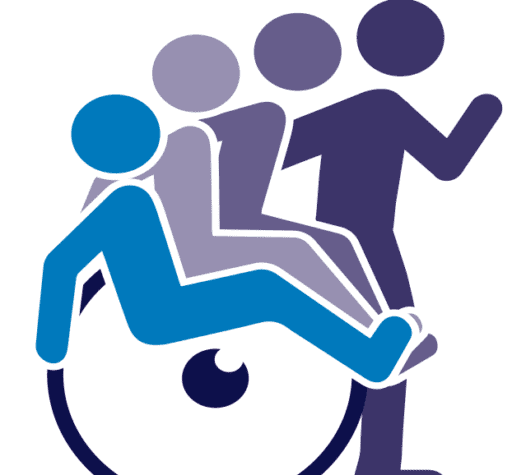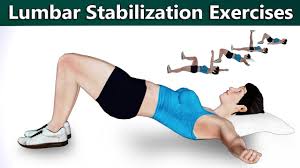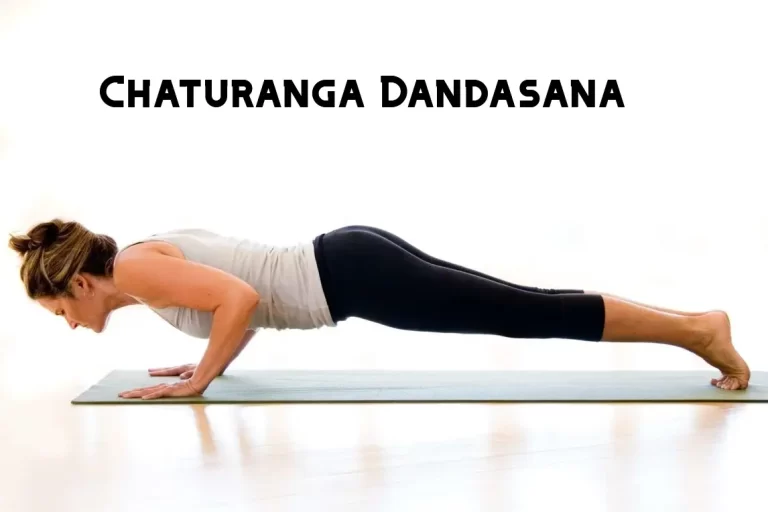7 Best Lumbar Stabilization Exercises
Table of Contents
Introduction:
Lumbar stabilization exercises help strengthen the core muscles that support the lower back, improving spinal stability and reducing the risk of injury. These exercises enhance posture, balance, and overall functional movement.
Exercises for lumbar stability focus on the deep core muscles, such as the obliques, multifidus, and transverse abdominis, which cooperate to support and shield the lower back while doing daily tasks.
You may strengthen your spine, avoid injuries, and support long-term spinal health by performing these exercises daily. The 7 Best Lumbar Stabilization Exercises that are easy, efficient, and appropriate for both novices and people healing from back problems will be covered in this article.
Benefits of the Top 7 Exercises for Lumbar Stabilization:
- Improves Core Muscles: These workouts strengthen the deep back and abdominal muscles that support and maintain the spine.
- Reduces Lower Back Pain: They lessen strain and chronic or recurrent back pain by enhancing spinal alignment and support.
- Improves Posture: By promoting appropriate spinal curvature and strengthening the lumbar stabilizers, slouching and imbalances are lessened.
- Prevents Injuries: During daily activity or exercise, a stable lumbar spine reduces the chance of sprains, strains, and other spinal injuries.
- Improves Balance and Stability: By teaching the body to regulate movement, these exercises improve general stability while lifting, walking, or standing.
- Supports Daily Activities: Bending, lifting, and twisting are safer and more effective when lumbar stability is improved.
- Improves Athletic Performance: A stronger and more stable core helps athletes transmit power, move more quickly, and have more endurance.
7 Best Lumbar Stabilization Exercises Video
Top 7 Exercises for Lumbar Stabilization:
Cat-Cow Stretch:
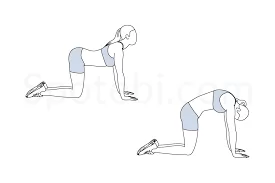
The Cat-Cow Stretch is a mild yoga stretch in which you alternately circle your back (cat pose) and arch it (cow pose) in a steady, deliberate pace. By engaging the entire spine, this dynamic stretch helps to increase spinal flexibility, relieve neck and back stress, and encourage improved posture. It’s a great warm-up or cool-down exercise for releasing stiffness and keeping a supple, healthy back because it also works the core and promotes relaxation.
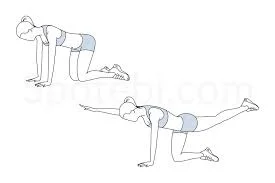
As you balance on your hands and knees and stretch the opposing arm and leg in a straight line, you’re strengthening your core with the Bird Dog exercise.
This exercise strengthens the deep stabilizing muscles in the spine, increases core stability generally, and improves balance and coordination. It works particularly well to strengthen the shoulders and glutes, improve posture, and lessen lower back pain.
The Bird Dog is a safe and effective method of increasing strength and stability without placing undue pressure on the back since it calls for controlled movement and balance.

This exercise engages the core for stability and primarily strengthens the shoulders, glutes, and lower back.
By focusing on the spinal erectors, it lowers the risk of back pain, improves posture, and strengthens the posterior chain overall. The Superman Pose is a straightforward yet efficient workout for strengthening the back and preserving spinal health because it doesn’t require any special equipment.
Bridge Pose:

Lying on your back with your feet flat on the floor and your knees bent, you may do the flexible Bridge Pose by raising your hips until they create a straight line from your shoulders to your knees. Along with increasing strength, it also helps to improve spinal alignment, stretch the hip flexors, and open up the chest.
Both rehabilitation and general fitness can benefit from the Bridge Pose’s great effectiveness in releasing lower back stress, improving posture, and engaging the posterior chain muscles.

A core-strengthening exercise called the Side Plank involves supporting your body on one hand or forearm while maintaining a straight body line from head to foot with your legs stacked. This posture works the deep stabilizing muscles of the spine as well as the obliques, shoulders, and glutes. Frequent Side Plank practice can improve overall core endurance and lessen the risk of lower back problems.
Knee to Chest Stretch:
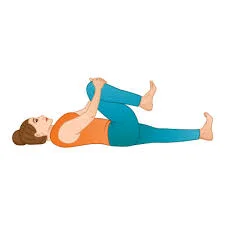
Lying on your back and pulling one or both knees toward your chest is a simple flexibility exercise called the Knee to Chest Stretch. It increases blood flow, relieves stiffness caused by extended sitting or bad posture, and increases lumbar flexibility. Particularly helpful for reducing lower back pain, increasing range of motion, and promoting general spinal health is the Knee to Chest Stretch.
Crunches:
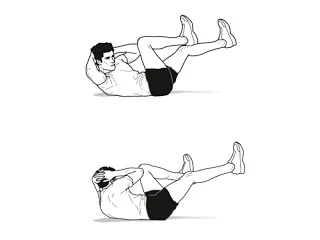
Then, while using your core, raise your shoulders and upper back a little bit off the ground. This exercise helps strengthen the core for improved stability and posture by focusing on the rectus abdominis, commonly referred to as the “six-pack” muscles.
Crunches can maintain spinal alignment, increase total core endurance, and improve athletic performance when performed properly. However, to prevent tension on the neck or lower back, good form is crucial.
Seated Spinal Twist:
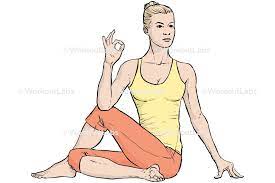
To complete the easy yoga stretch known as the Seated Spinal Twist, sit up straight with your legs out in front of you. Bend one knee and cross it over the other leg while turning your torso in the direction of the bent knee. This exercise promotes better posture, relieves shoulder and back strain, and increases spinal mobility.
By gently twisting, it also stretches the oblique, gluteal, and hip muscles, improving circulation and digestion. For keeping a healthy, flexible spine and reducing stiffness from extended sitting, the Seated Spinal Twist is particularly helpful.
Conclusion:
To sum up, the top seven lumbar stabilization exercises are great for enhancing spinal alignment, strengthening the core, and easing lower back pain. You may improve stability, avoid injuries, and promote long-term back health by regularly performing these activities. These exercises offer a safe and dependable method to keep your lower back strong, flexible, and pain-free, whether you use them for rehabilitation or as part of your normal fitness regimen.
FAQs
An anti-extension exercise aims to prevent the lumbar spine from becoming overextended. For training posture and stance for complex lifts like the deadlift and squat, these workouts are excellent.
The reasons behind lumbar instability
Sedentary lifestyles, bad posture, injuries, poor physical condition, muscle inadequacy, and excess body weight all contribute to these degenerative issues. Congenital: The most common is spondylolisthesis, which is caused by spondylolysis, a bone abnormality at the facet joint junction.
A manual therapy method called lumbar muscle energy treatment employs movement and pressure to assist the lumbar spine in regaining its natural alignment and range of motion. It is frequently used to treat orthopedic disorders such as joint, neck, and back pain.
Lower back isometric workouts include squeezing the back muscles with little to no movement. Examples of holds that require you to keep a particular posture against resistance for a certain amount of time are prone holds, supine holds, and bird dog holds.
By offering back and core strengthening exercises and passive pain management techniques like massage and heat/cold therapy, a physical therapist can help reduce the symptoms of a herniated disc.
Bridges, cat-cow stretches, half crunches, and pelvic tilts are the greatest exercises for lumbar spondylosis. Swimming and certain stretches, such as hamstring and knee-to-chest stretches, can also be helpful.
The squat, deadlift, bench press, and overhead press are commonly referred to as the “Big 4” exercises. They are regarded as basic compound exercises in strength training and are well-known for their ability to increase muscular hypertrophy, functional fitness, and overall strength.
Even though the “king of back exercises” is up for controversy, the deadlift is usually mentioned as the best exercise for developing the entire back. It’s a compound exercise that targets the lower back, lats, and traps, among other back muscles. Pull-ups and barbell rows, which are also well-known for developing a muscular and powerful back, are other excellent options.
Strengthening the back without placing undue strain on the affected discs, facets, and ligaments is the aim of Dynamic Lumbar Stabilization Exercises (DSE). The spine’s core muscle stabilizers quickly weaken and eventually atrophy following any significant back injury.
The deep back and abdominal muscles can be strengthened to create the best possible spinal stability. These consist of the quadratus lumborum, oblique abdominals, multifidus, erector spinae, and transversus abdominus.
Presenting the McGill Big 3, a series of exercises intended to fortify your spine and core. The McGill Big 3 can appear to be easy workouts at first. Don’t be deceived, though; they are powerful. The modified curl-up, side plank, and bird dog are the three exercises.
References:
- Cole, A., MD. (2015, May 13). Lumbar spine stabilization exercises. Spine-health. https://www.spine-health.com/wellness/exercise/lumbar-spine-stabilization-exercises
- Medicine, A. (n.d.). Lumbar/Core strength and stability exercises. In Athletic Medicine. https://www.vertibono.com/pdfs/lumbar.pdf
- Cronkleton, E. (2024b, May 20). 7 Lower back stretches to reduce pain and improve mobility. Healthline. https://www.healthline.com/health/lower-back-stretches#childs-pose
- Weg, A., & Wellbank, L. (2024, November 19). 7 stretches for lower back pain, according to experts. Prevention. https://www.prevention.com/fitness/a20506161/5-stretches-to-ease-your-lower-back-pain/
- Menzies, R. (2022, October 26). What are lumbar stabilization exercises? Healthline. https://www.healthline.com/health/lumbar-stabilization-exercises
